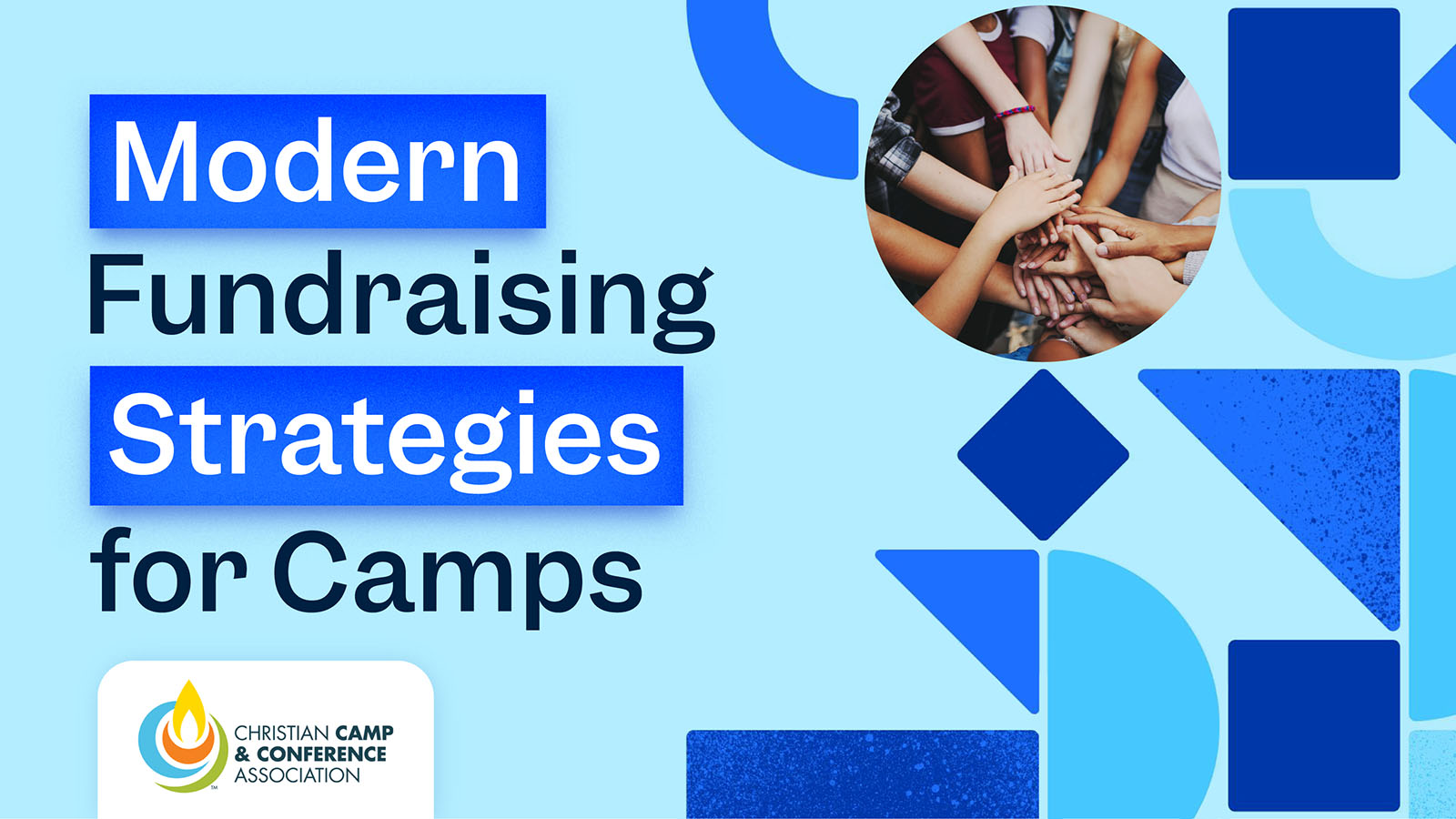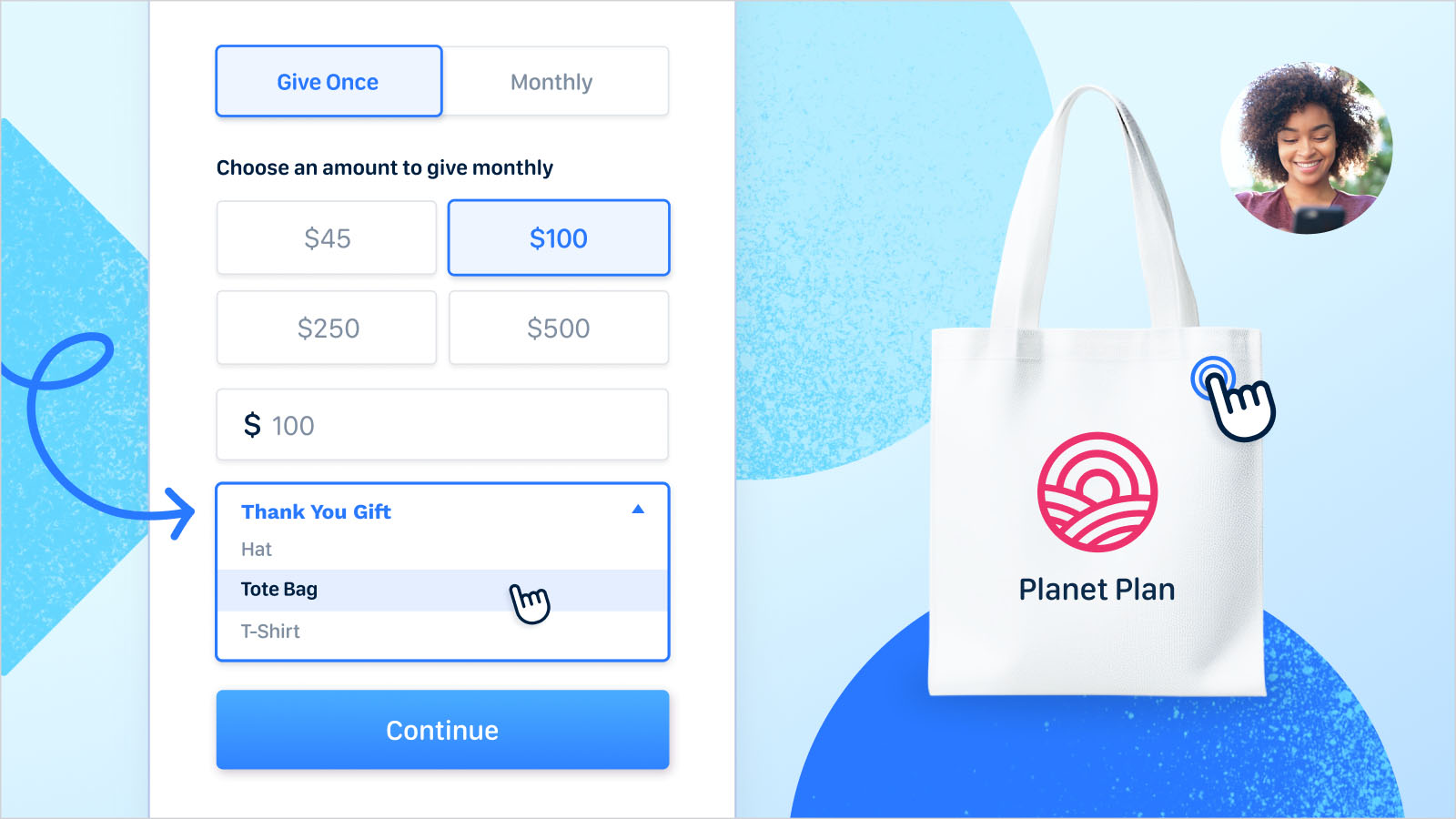Nonprofiteers rarely get rattled, but no matter how many times you do it, meeting with a potential sponsor is a nerve-racking experience. You're there with one task and one goal: to pitch your nonprofit and walk out with a new sponsor. But what if they've already committed to other nonprofits, or what if you're just not a good fit? Don't worry, darling: we're here to walk you through the full pitching process so that corporate sponsors are clambering to get their social responsibility on with you. How? Let's start with the basics.
What is the meaning of corporate sponsor?
A corporate sponsor is a company that provides financial (or other) support for an event, project, organization, or initiative in exchange for certain benefits. Corporate sponsorships are mutually beneficial, helping the sponsored party to achieve their goals or fund their activities while the sponsoring corporation gets exposure and has the opportunity to connect with a new target audience. While this article is all about nonprofit events and programs, corporate sponsorships are also seen in sports (hi, KFC Yum! Center!), event venues, and festivals.
What is the difference between corporate sponsorship and partnership?
In a corporate sponsorship, the sponsor provides financial or other support to another party in exchange for marketing and visibility. However, in a corporate partnership, there is a deeper relationship between the two parties, and they have a common goal. It's more collaborative, with shared responsibilities and resources. Additionally, corporate sponsorships tend to be short-term while partnerships are a longer-term commitment. Of course, if you can get that corporate partner to stick around, all the better!
And while we're at it, a corporate sponsor is also different from a corporate donor. While a sponsorship is a mutually beneficial relationship in which the corporation expects promotion and other benefits in exchange for their support, a corporate donor gives more unconditionally with a goal to support a nonprofit's mission. Semantics and subtleties!1
How do you get corporate sponsorship?
So, how do you actually move a company from potential sponsor to full-fledged corporate sponsor? Here's how to pitch for corporate sponsorship, from start to finish.
- Define goals
- Identify opportunities
- Know the benefits
- Create a proposal template
- Build a relationship
- Pay attention
- Follow up
- Seal the deal

1. Define your goals.
What are you looking for in a prospective sponsor? Do you want someone to sponsor a fundraising event or a program? Are you looking for financial contributions or in-kind ones? Before you approach any company, know what you want and be able to clearly articulate it.
2. Identify sponsorship opportunities.
Do some research and identify companies that align with your organizational mission and values. You can go big (Bank of America gives more than $65 million each year through employee donations and the bank’s matching gifts program) or small (local businesses tend to invest in their local community).
3. Know the benefits.
A corporate sponsorship is beneficial for both parties, so get clear on what benefits you can offer your sponsors. Remember: they're in this to do good, but they're also in it for the cause-related marketing.
4. Craft a sponsorship proposal and pitch deck.
Never enter a pitch empty-handed. Write everything down so that potential sponsors know exactly what to expect. At the same time, craft a customized pitch deck to present your case.
5. Start building a relationship.
With all the logistics out of the way, you can focus on the relationship. Once you've pitched your event or project, check back in to see if they need anything else or have any concerns. Listen well, pause often, and follow their lead. The goal is to start making a personal connection with each potential sponsor.
6. Pay attention to the details.
Many larger businesses have specific instructions and forms for corporate sponsorship opportunities, so make sure you're following the directions, dotting every i and crossing every t.
7. Follow up.
Once you've shared proposal and presented your pitch deck, stay on it. Highlight all the benefits for the corporation and be open to negotiations to ensure a beneficial relationship for both parties.
8. Seal the deal.
Once your sponsor says yes, finalize all the details and get an official agreement. It's not over until you've signed all the forms!
Why is corporate sponsorship important?
We love corporate sponsorships because they have a positive impact for the sponsor and the nonprofit. Specifically, there are several important benefits.
- Financial support. Whether it's an event sponsorship or an in-kind donation, corporate sponsors provide valuable financial support to help you meet your fundraising goals.
- Better events. A lot of sponsorships are for nonprofit special events, and that's because more sponsors lead to successful events. In addition to financial support, they can donate services or event materials, ensure additional event attendees, and help with your marketing strategy.
- More visibility. Just as you help event sponsors get their name out there, they can expose your organization to a new target market.
- Diversified funding. You never want to rely on just one source of funding, and corporate sponsors can be a reliable source of funding, even during tumultuous times.
- Connect with major donors. Corporations are made of individuals, from the business owner to their clients, giving you an opportunity to widen your donor base.
- Pave the way for potential partners. While many sponsorships are for one-time events, the goal should be forming a long-term relationship over getting a one-time monetary donation.
What types of giving do corporate sponsorships include?
Just as there are many types of donors, there are many types of sponsors. So, what are all the ways in which corporate sponsors can give?
Cause marketing
Think of all the products you see with a pink ribbon. That's cause-related marketing done right! With this form of marketing, your nonprofit spreads awareness and gets a percentage of sales from a branded product. The for-profit business, in turn, acquires new customers who want to support your mission.
Event sponsorship
Events are a big deal for nonprofits, and that's why you want to get your event sponsorship proposals in tip-top shape. When you have a sponsor for an upcoming event, you have a bigger marketing budget, a bigger guestlist, and a bigger event. In return, you can splash corporate logos on your programs and in your marketing materials as well as give larger sponsors naming rights.
Matching gifts
Some companies match their employees' charitable donations, doubling the impact of individual contributions. This is a great way to source additional donations, especially when the corporate payroll has many employees on hand.
Non-cash gifts
Also known as in-kind sponsorships, non-cash means that the sponsoring company provides expertise in a specific are or products to further your organization’s mission. For instance, a printing studio might sponsor your promotional materials by printing them free of charge, or an airline might sponsor an event by contributing business-class seats for your auction.
Giving in the workplace
Companies facilitate employee donations through giving in the workplace programs in which workers contribute a portion of their salaries to a nonprofit organization through payroll deductions. Even if it's just $2 or $5 monthly, those smaller donations can really add up. If the corporation has another giving program in place, ask them to consider your nonprofit as an alternative option for donations.
Customer giving
When supermarkets ask you to round up for a cause or display a shiny donation box at checkout, you know those companies are working with nonprofits to source donations. This corporate sponsorship opportunity requires minimal effort but pays off big time: the company looks generous without spending a cent, and the nonprofit gets funds and facetime.
Volunteering
In addition to financial sponsorships, some for-profit businesses will sponsor a nonprofit by providing volunteers to lend a hand. This is particularly helpful at organizations that require many hands but don't need a lot of training, like food banks. Additionally, companies may also be able to donate volunteers for boards or committees. For instance, if a company has an on-staff event planner who will volunteer their time, you'll benefit from their expertise while getting back precious staff hours.
What is a corporate sponsorship package?
A corporate sponsorship package is a a sponsorship proposal that outlines why a company should sponsor an event, project, or initiative. When a company sponsors a nonprofit, it's a marketing opportunity that can be used to raise their profile in the community. So, you need to be able to articulate all those juicy promotional benefits to a potential corporate partner, assuming that they'll invest in your nonprofit if there is a good return on that investment.
A sponsorship package typically starts with a corporate sponsorship letter that includes and introduction and the nonprofit's elevator pitch. Then, it might include additional information on the organization, specific goals, details about the event audience (AKA the potential customers), a timeline, sponsorship levels, benefits, and any optional add-ons. It's usually sent to companies by direct mail or email unless there are specific online forms to fill out.
What do sponsors get in return?
The world is your sponsorship oyster, so don't be afraid to customize your corporate sponsorship offerings to each potential sponsor. That being said, sponsors usually receive marketing benefits, including logo and ad placement on your website, in promotional materials, or at an event; advertising space at an in-person event; media coverage; and/or social media and digital promotion. Additionally, you may offer them speaking opportunities (for live or virtual events), complimentary tickets to the sponsored event or future events, and/or exclusive experiences, like a behind-the-scenes tour.
What are the steps for sponsorship?
The sponsor-nonprofit relationship needs to go beyond “please write us a check, TY, see you next year!” You're looking for a potential partnership, a commitment that evolves and grows over time. To get there, you'll need to do some work. These tips can help as you navigate the sponsorship process.
Dig deeper
First of all, if you're reaching out to a big company, don't treat it as a single corporation. Instead, tailor your communications and offerings, whether it's sponsorship tiers or benefits of sponsorship, to various divisions.
Have a designated point person
If you can, make a personal connection with someone from the company and ask them to act as a liaison. You'll have someone on-site daily who is a participant, cheerleader, volunteer coordinator, and insider. Plus, you could have a new donor!
Use meetings wisely
When you have the opportunity to meet with contacts from the sponsoring company, use them as more than just sales opportunities. If you're always pitching, management will quickly grow tired and stop attending or start sending lower-ranked staff in their place. Instead, use meetings as an opportunity to grow your relationship and ensure the company is satisfied with you as their nonprofit partner. Really, it's all about having a conversation.
Provide firsthand experience
Go beyond financial donations by offering your sponsors hands-on experience with your organization. Maybe it's a tour of your production facilities or a day with your dogs that are awaiting adoption. You want to spark an emotional connection and get them invested in your success.
Report back
Numbers talk, so once the terms of a sponsorship have ended, go into that donor database and track the outcomes. Then, provide sponsors with regular reports demonstrating the impact of their investment.
Recognize your corporate sponsors
If you want sustained corporate support, make sure your sponsors feel appreciated. Sing their praises far and wide, invite them to in-person and virtual events, and stay in touch even when there's nothing much going on. Ask your marketing department (or marketing person!) to overdeliver when it comes to your sponsors.
What is a corporate sponsorship agreement?
A corporate sponsorship agreement is a legally binding contract between the sponsoring corporation and the organization, event, or initiative being sponsored, detailing the official terms of the partnership. The agreement usually includes basic legal information, timelines, sponsorship details, payment schedules (if relevant), cancellation terms, liability information, and more. Oh, and make sure it's all signed and dated! It's a critical document to protect both parties, ensure transparency, and make sure everyone is on the same page.
What are the 4 levels of sponsorship?
While sponsorships aren't one-size-fits-all, there are four common sponsorship levels. For a smaller event or project, you might want fewer levels; for your huge annual event, you might want a fifth. Do what feels right!
- Platinum
- Gold
- Silver
- Bronze
1. Platinum sponsorship
Platinum sponsorship is the highest level of sponsorship, meaning platinum sponsors contribute the largest amount. In return, they're the most prominently featured and often receive special benefits. Usually, there's just one platinum sponsor to ensure top-tier billing.
2. Gold sponsorship
Gold sponsors are one step below platinum; they still make a significant contribution but it's less than top-tier sponsors. They receive high visibility and still get some exclusive benefits.
3. Silver sponsorship
Next up is silver sponsorship. At this level, sponsors typically make a moderate contribution. In exchange, they receive some exposure and benefits.
4. Bronze sponsorship
Bronze is the lowest tier of sponsorships. Bronze sponsors receive basic recognition and exposure.
Each nonprofit can adapt these basic levels to fit their audience and cause. For example, environmental organizations might call the four tiers Redwood, Birch, Maple, and Pine. Have some fun!
What is an example of a corporate sponsor?
If you've ever been to a large concert venue or sports stadium, you've seen a corporate sponsorship in action. There's the Alaska Airlines Arena and Petco Park. PNC Bank keeps busy with PNC Field, PNC Park, PNC Stadium, and PNC Arena. All of these companies pay big bucks to have their brand affiliated with an enjoyable experience that people care about.
In the nonprofit realm, the Adidas-Boston Athletic Association (BAA) partnership comes to mind. Adidas has long sponsored BAA, particularly the Boston Marathon, and they're the perfect sponsor for the health-focused nonprofit, showcasing their apparel while giving back in a big way. And chances are your local zoo or museum has a page listing their corporate partners, which may be local chapters of national organizations.
Final thoughts
Corporate sponsorships can have a huge impact on a fundraising event or new program, but ultimately, the goal is to keep the partnership going. The best way to do that is through open communication and work togethering to ensure a mutually beneficial relationship. So, start with a great pitch, stay transparent, and spread awareness of your cause and your amazing corporate sponsors. Then, you can keep fighting the good fight together.































.webp)
.webp)











.webp)
.webp)

.webp)
.webp)
.webp)




